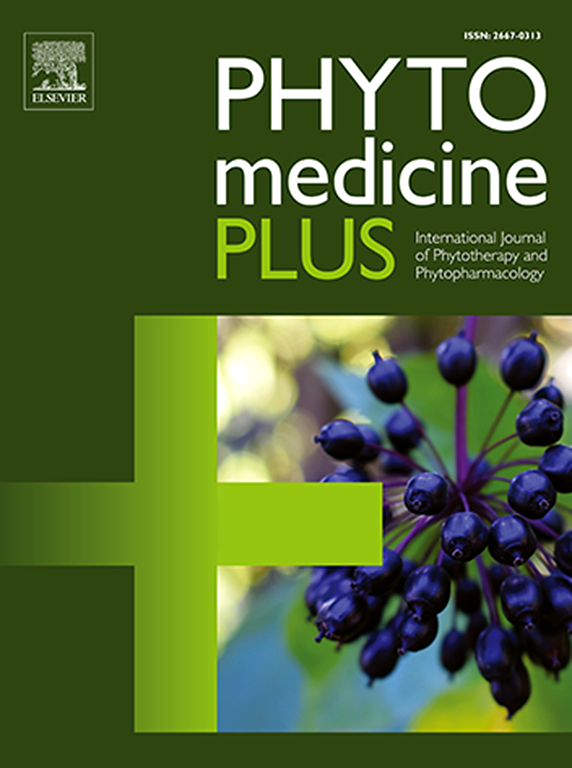东非国家具有神经保护潜力的药用植物:系统综述
Q3 Pharmacology, Toxicology and Pharmaceutics
引用次数: 0
摘要
近年来,植物源性天然化合物在各种人类疾病的治疗中得到了广泛的关注;因此,本研究考察了东非具有神经保护潜力的药用植物及其作用机制。方法本研究是一项系统综述,包括使用实验动物模型的随机对照试验研究,这些实验动物模型使用来自任何东非国家的药用植物治疗各种神经系统相关疾病。结果大多数纳入的研究是在肯尼亚进行的6/12(50%)。来自埃塞俄比亚和乌干达的研究分别占2/12(16.7%)和4/12(33.3%)。其中三分之一的研究使用了所选植物的叶子。综述的研究强调了植物的神经保护活性,并证明了生物化学和行为的改善。主要发现包括谷氨酰胺合成酶、Na+/K+三磷酸腺苷酶、钙三磷酸腺苷酶、乙酰胆碱酯酶、过氧化氢酶和超氧化物歧化酶水平的增加,所有这些都支持增强神经元功能和防止氧化应激。相反,丙二醛水平显著下降,丙二醛是脂质过氧化的重要标志,表明氧化应激导致的细胞损伤减少。行为结果与这些生化变化一致,在记忆和学习、运动活动、癫痫发作阈值和焦虑样行为方面表现出明显的改善。结论所纳入的研究表明其具有较强的神经保护活性,生化增强有助于改善神经健康和功能恢复。因此,在对其有效成分和作用机制进行彻底研究后,所报道的植物可以作为补充和替代医学的选择。本文章由计算机程序翻译,如有差异,请以英文原文为准。

Medicinal plants with neuroprotective potential in East African countries: A systematic review
Background
The use of plant-derived natural compounds in the management of various human disease conditions has gained lots of attention in recent times; hence, the present study examined medicinal plants with neuroprotective potential in East Africa and their mechanism of action.
Method
The present study is a systematic review that included randomized controlled trial studies using experimental animal models for various nervous system related conditions treated with medicine plants sourced from within any of the East African countries.
Result
Most of the included studies were conducted in Kenya 6/12 (50 %). Studies from Ethiopia and Uganda accounted for 2/12 (16.7%) and 4/12 (33.3 %) respectively. One-third of the included studies used the leaves of the selected plants. The reviewed studies highlighted neuroprotective activities of the plants, as evidenced by biochemical and behavioral improvements. Key findings included increased levels of glutamine synthetase, Na+/K+ ATPase, calcium ATPase, acetylcholinesterase, catalase, and superoxide dismutase, all of which support enhanced neuronal function and protection against oxidative stress. Conversely, there was a significant decrease in level of malondialdehyde, an important marker of lipid peroxidation, indicating reduced cellular damage from oxidative stress. Behavioral outcomes aligned with these biochemical changes, showing marked improvements in memory and learning, motor activity, seizure threshold, and anxiety-like behavior.
Conclusion
The included studies collectively suggest a strong neuroprotective activity, with the biochemical enhancements contributing to better neurological health and functional recovery. Hence, the reported plants could be explored as options in complementary and alternative medicine following a thorough examination of their active ingredient and mechanism of action.
求助全文
通过发布文献求助,成功后即可免费获取论文全文。
去求助
来源期刊

Phytomedicine Plus
Medicine-Complementary and Alternative Medicine
CiteScore
3.70
自引率
0.00%
发文量
178
审稿时长
81 days
期刊介绍:
 求助内容:
求助内容: 应助结果提醒方式:
应助结果提醒方式:


